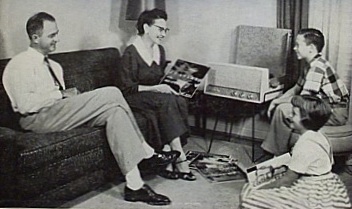Podcast No. 23 – The big “M” and the letter “S”

Warning! Podcast No. 23 is educational and good fun for the entire family! Gabriel Dalar has mom and dad snapping their fingers without getting off the sofa, while Les Classels lets the kids twist it out of their system. Stone has the perfect song for rebellious teens and Claude Bolling provides you with some good, wholesome Madison moves. Stella allows the entire family to bone up on their knowledge of Nouvelle Vague films by playing “name that movie” and Shirley Théroux gives parents enough time to make some popcorn, send the kids to bed and pop in a black and white film with sexy French actors of the 1960s.
Playlist
Gabriel Dalar – Hé Youla !
Les Classels – Lucille
Stone – C’est ma vie
Claude Bolling – Le Madison
Stella – Nouvelle Vague Blues
Shirley Théroux – Par amour du métier
Subscribe to the Radio Oh la la podcast at Feedburner or using iTunes. Radio Oh la la also has a MySpace page.


August 29th, 2007 at 10:05 pm
Salut, Natasha! Listening to your podcast, Tirez sur le pianiste was one of my favourite movies in high school, I really need to watch it again one of these days. Fun podcast, as always.
August 30th, 2007 at 9:24 am
Thanks, ma chère !
August 31st, 2007 at 2:30 am
Hi Natasha!
If your dad doesn’t know The Madison, you can probably learn it from the John Waters movie Hairspray (the original at least, haven’t seen the new musical version.)
In addition, I have a book of dances from the 60s (and 70s) that shows the steps all mapped out with the little ‘dance floor steps and lines’ (is there a technical term for that?) – I know it has The Madison in it, I would be happy to scan those pages for you if you’d like. (Provided I can find it. It’s a very cool book – got it for a dollar!)
September 3rd, 2007 at 9:15 pm
Hairspray has a fake Madison dance in it, so people say.
Really? Send the page with the Madison, although I manage to figure out the big M. Thanks!
September 4th, 2007 at 12:38 am
It turns out there are no pics, so here is what it says–
From “Let’s dance” (published 1969, chapter 6 “The Go-Go Dances”)
The madison
The madison is a sequence dance in which the dancers stand side by side. There has to be a “caller” (leader) who will call out the different figures to be executed, such as the “T”, the “M” etc.
Basic movement
1. LF to side and slightly forward, without putting the weight on it.
2. Close the LF to the RF, without putting the weight on it.
3. LF forward.
4. Close RF to LF, without putting the weight on it.
5. RF back.
6. Close LF to RF, without putting the weight on it.
Note: As long as the “caller” “leader” does not order another figure, all the dancers continue to dance the basic movement.
The “T”
The dancers draw the letter “T” on the ground.
Preparation
1. LF to left and slightly forward, without putting the weight on it.
2. Close the LF to the RF, without putting the weight on it.
The “T”
1. LF forward.
2. Close RF to LF.
3. LF forward.
4. Close RF to LF.
5. RF to side.
6. Close LF to RF.
7. LF to side.
10 Close RF to LF.
11. RF to side.
12. Close LF to side.
13. RF back.
14. Close LF to RF.
15. RF back.
16. Close LF to RF.
The “M”
The dancers draw the letter “M” on the ground.
Preparation
1. LF to side and slightly forward, without putting the weight on it.
2. Close the LF to the RF, without putting the weight on it.
The “M”
1. LF forward.
2. Close RF to LF.
3. LF forward.
4. Close RF to LF.
5. RF diagonally back.
6. LF closed to RF.
7. LF diagonally forward.
8. Close RF to LF.
9. RF back.
10. Close LF to RF.
11. RF back.
12. LF closed to RF.
Note: After drawing the letter “M” dancers go back over their steps, to return to the starting place in the following manner:
1. LF forward.
2. Close RF up to LF.
3. LF forward.
4. Close RF up to LF.
5. RF diagonally back.
6. Close LF up to RF.
7. LF diagonally forward.
8. Close RF up to LF.
9. RF back.
10. Close LF up to RF.
11. RF back.
12. Close LF to RF.
September 4th, 2007 at 9:35 am
A huge thanks to you for all this!!